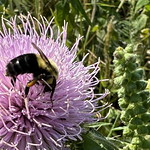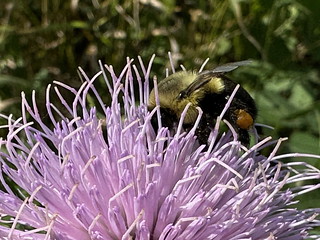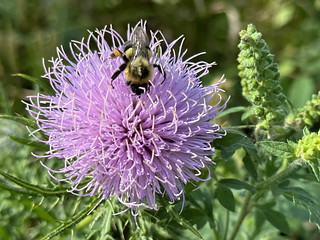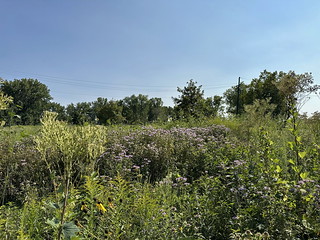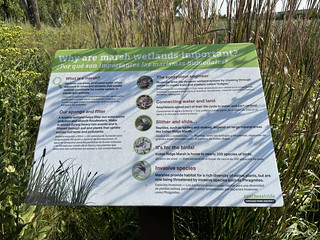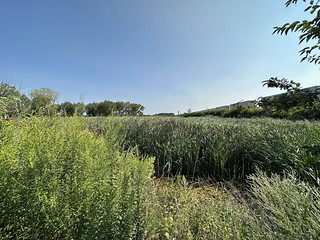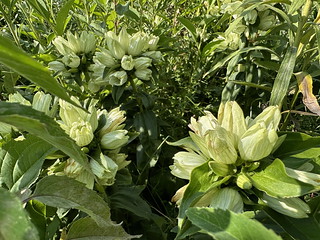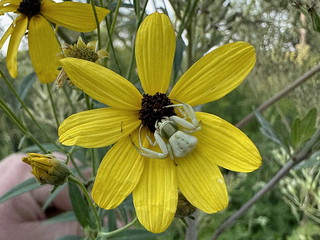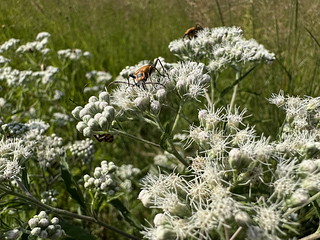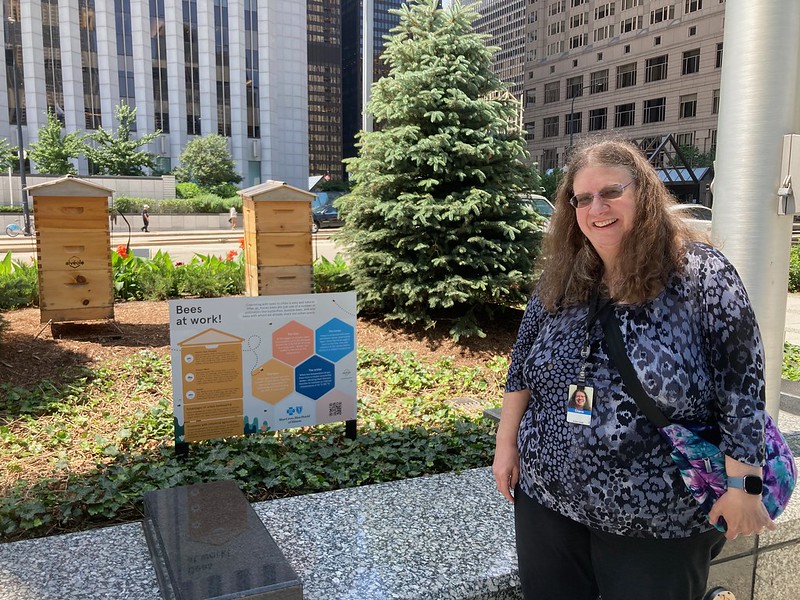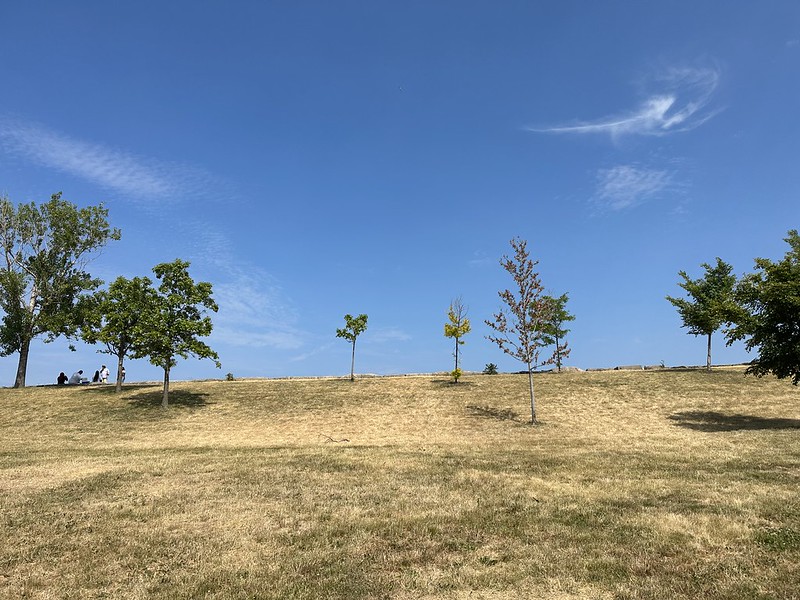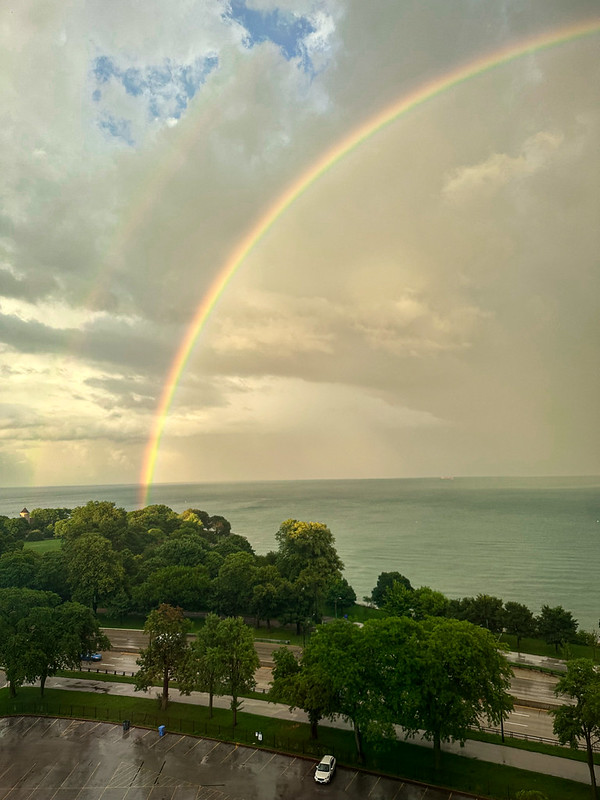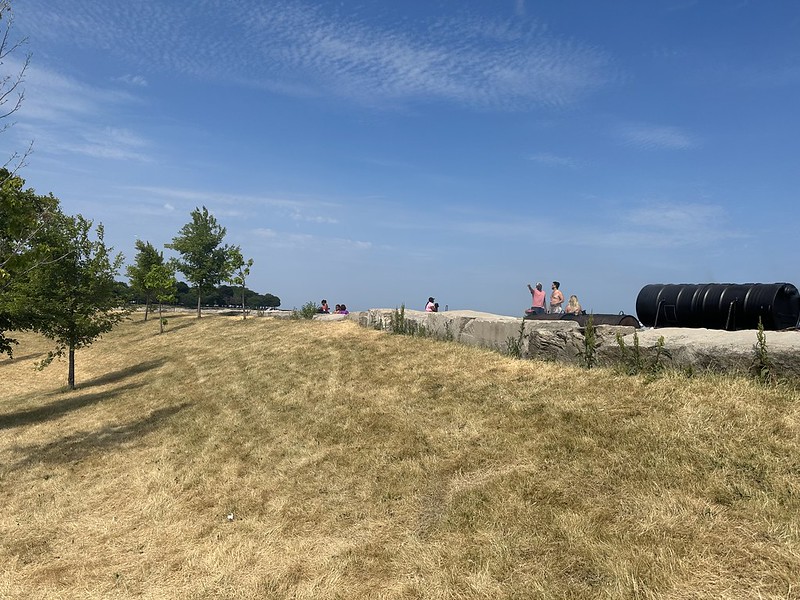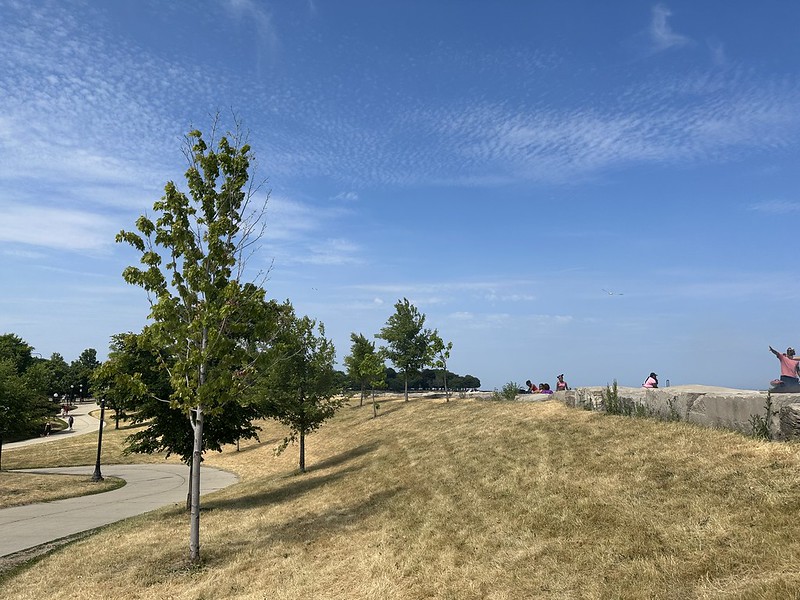August 29, 2023
J and I decided to see Save the Tunes at Chellberg Farm, but detoured to Indian Ridge Marsh, or Park 565 in Chicago Park District nomenclature. The last visit to Indian Ridge Marsh was in 2019, when the area by the Norfolk Southern tracks was open water.
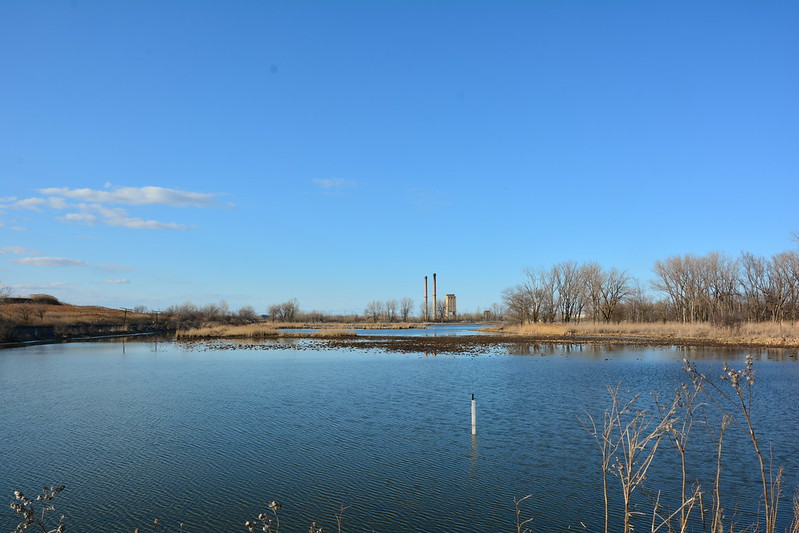

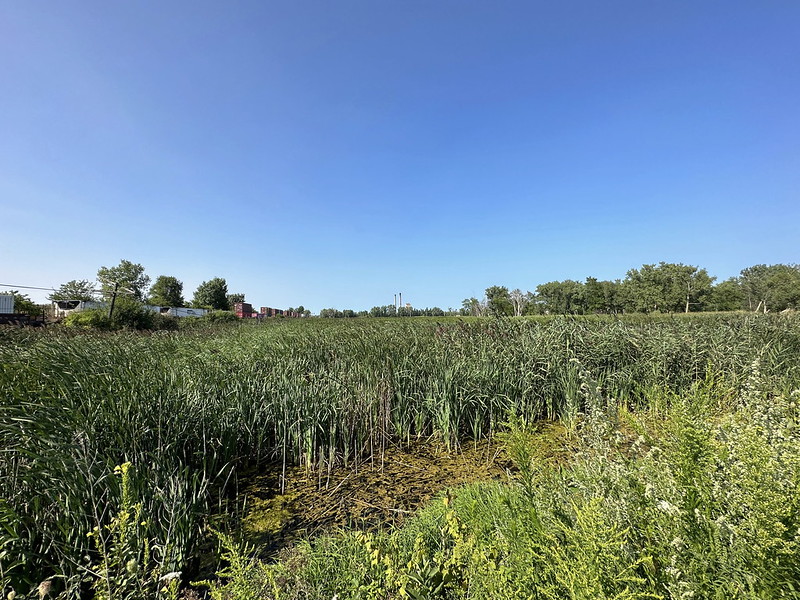

First, we had to get there. We passed meadows of native flowers, including compass plants whose disappearance Aldo Leopoldo eloquently lamented. They’re thriving in natural areas in and around Chicago, such as the Calumet Region here and at Morton Arboretum.
We spotted monarchs and other insects, including an army of goldenrod soldier beetles intent on perpetuating the species.
A surprise awaited us at the end of this westbound trail (another trail, too wet and muddy to negotiate in 2019, heads south). The open water had filled in with aquatic plants in on both sides of the trail. which dead ends at the Norfolk Southern line. I hope they’re native. There was a piece of heavy equipment in the area, so I’d guess the Chicago Park District and volunteers are working on it.
I didn’t want to miss Save the Tunes, so I didn’t dawdle on the way to the lot. J called me back to look at beetles, which I never saw because was distracted by this:

This is a female white-banded crab spider, the same species of spider I witnessed killing a painted lady, an Eastern tiger swallowtail, and a skipper at Perennial Garden. They choose a flower and lie in wait for their unsuspecting pollinator prey. This one may have turned slightly yellowish after a few days on this tall tickseed flower. The ones I’d seen before (when I noticed the dying or dead butterflies) were embedded in the more intricate blooms of a butterfly bush or other flower and were nearly impossible to see. The male, by the way, is smaller and more colorful, and dines on nectar.
My final sighting of the day was a pair of American goldfinches on a pair of compass plants, with the female closer to the trail. At Perennial Garden, I’d noted the goldfinches favored the tiny stand of compass plants there.
Aldo Leopold would be happy.

